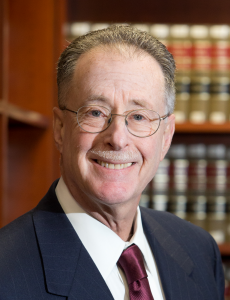Response by Professor Catherine J. Ross
Geo. Wash. L. Rev. Docket (Oct. Term 2014)
Elonis v. United States, 575 U.S. ___ (2015).
Docket No. 13-983; argued December 1, 2014; June 1, 2015
Slip Opinion | NY Times | SCOTUSblog
This piece is featured on SCOTUSblog’s June 8th Round-Up.
That is why Elonis’s case before the Supreme Court—decided last week—attracted attention and amicus briefs from groups like the ACLU, the Cato Institute, and the National Coalition Against Censorship as well as major media organizations on one side, and state attorneys general and groups primarily concerned with citizen safety, including advocates for domestic violence victims, on the other. The issues required a delicate touch.
After Elonis’s wife left him, taking their two children with her, he began to listen to increasingly violent rap music, and to post his own violent rap lyrics emulating Eminem on his Facebook page. He chose a Facebook nom de plume, which he used to post “graphically violent language and imagery” directed at his ex-wife, co-workers, law enforcement agents, and others, including a threat to stage “the most heinous school shooting ever imagined” in an unspecified kindergarten classroom. His online threat involving a co-worker cost him his job, but he didn’t back off. He claims the posts were all “fiction” that he found therapeutic.
In 2011 Elonis was convicted of four counts of violating 18 U.S.C. § 875(c) (the Statute), a 1939 federal law that criminalizes the interstate transmission of “any communication containing any threat . . . to injure” another person. The Third Circuit affirmed. While Elonis’s appeal was pending, he served roughly three years in prison. He was paroled, but he was again arrested and jailed in April 2015 after being charged with assaulting his current girlfriend’s mother by throwing a metal pot at her head.
Unlike the pending assault charge, the case decided by the Supreme Court on June 1 did not involve criminal conduct. It centered on communication unaccompanied by overt acts, expression that Elonis argued was constitutionally protected. But the Statute could only be applied to Elonis if his online words amounted to true threats, a narrow category of expression that lies outside the scope of First Amendment protection—like libel, obscenity, and a handful of other “low value” types of speech.
A seven-person majority overturned Elonis’s conviction, and the Chief Justice authored the opinion. Focusing on the Statute’s lack of a mens rea requirement, and the district court’s instructions to the jury that it could convict without finding that the prosecution had proved Elonis intended to threaten the targets of his words, the Court emphasized: “’What Elonis thinks does matter.’” The Court expressly rejected the government’s contention that it was sufficient to show that Elonis knowingly communicated his words, and to rely on an objective test by asking the jury whether a reasonable person would have known that “the posts would be read as genuine threats.” Chief Justice Roberts stated, “that is a negligence standard,” and it falls short of what federal law has long required for criminal liability.
Elonis had raised two legal questions in his appeal to the Supreme Court respecting the Statute. First, whether Section 875(c) required proof of a “defendant’s subjective intent to threaten as a matter of statutory interpretation,” and second, whether the First Amendment as interpreted in Virginia v. Black (2003), a leading case interpreting true threat doctrine, required such proof. The Court resolved the first question by applying federal common law principles, and did not reach the constitutional law issues the second question presented.
While some of the many amici who submitted briefs in this case might be disappointed that the Court neither joined the constitutional issues nor specified a precise standard for finding culpability, the Court was right to decline to consider the constitutional arguments. The avoidance of constitutional adjudication where a controversy can be resolved by another mode of analysis is a foundational legal principle. And, First Amendment jurisprudence has emerged incrementally in response to varying facts and contexts. Elonis should not be taken as another example of what Frederick Schauer has called the Roberts Court’s avoidance of its guidance function.
Justices Alito (concurring) and Thomas (dissenting) alleged that the Court’s failure to state clearly which of several possible standards should be applied to threats like Elonis’s—recklessness, knowledge, express purpose—was, in Justice Alito’s words, “certain to cause confusion and serious problems,” for judges, prosecutors, and even for speakers themselves. But they are wrong. The majority’s holding that something more than negligence was required for a conviction under the true threat doctrine moved the First Amendment conversation forward, and gave clear directions to the lower courts for cases tried under federal law. In Elonis the Third Circuit (a circuit generally very protective of speech rights) had joined eight other courts of appeals in holding that negligence sufficed to support a conviction under Section 875(c) for issuing a true threat.
The Supreme Court made clear that a negligence standard is too low to satisfy the common law of criminal culpability which requires that to be convicted and punished a defendant must know “that the communication contains a threat.” A “reasonable person standard,” the Chief Justice instructed, while “familiar” (and acceptable) in civil tort law, “is inconsistent with the ‘conventional requirement for criminal conduct—awareness of criminal wrongdoing.’” The Court reserved the more precise question whether the mental state requirement could be satisfied by a showing of recklessness or whether something more—like intent—would be required. The Chief Justice anticipated that the issue might wend its way back to the Court for a determination whether “recklessness suffices for liability under Section 875(c),” a question which no court of appeals has ever addressed.
Discussing the Elonis ruling, the Wall Street Journal commented that the court “avoided new pronouncements about free-speech protection in the Internet age.”1 But Elonis’s victory is in fact a victory for free speech.
First, the opinion implicitly reiterates the Court’s unwavering position that the emergence of new forms of communication does not require reconsideration of longstanding approaches to free speech or the crafting of special doctrine for online expression. This likely surprised some observers because so many of the questions at oral argument revolved around the unique characteristics of online expression.
Second, the rejection of a negligence standard in criminal prosecutions involving true threats indisputably makes it harder to convict speakers using the true threat doctrine, which is appropriate. As a matter of constitutional law, conviction for issuing a true threat ought to be very difficult to achieve. In Watts v. United States (1969) the Supreme Court defined a true threat as words used “to communicate a serious expression of an intent to commit an act of unlawful violence to a particular individual or groups of individuals.” The jury instructions at Elonis’s trial lacked a direction to find either intent or a “serious expression” of a plan to commit unlawful violence.
Some of the content Elonis posted indisputably chills the blood of reasonable obervers. Like many others, I find the following particularly disturbing:
Did you know that it’s illegal for me to say I want to kill my wife? . . .
Now it was okay for me to say it right then because I was just telling
you that it’s illegal for me to say I want to kill my wife . . . .
. . . it’s very illegal to say I really, really, think someone out there
should kill my wife . . .
But it’s not illegal to say with a mortar launcher.
Because that’s its own sentence.
Elonis goes on to explain how illegal it would be to tell his Facebook audience the best vantage point for firing a mortar launcher at his wife’s house, which he sets out in accurate detail, along with a diagram of the property. It would not surprise me at all if a jury considering similar facts were to conclude that the speaker was at least reckless, or even that he intended to cause his ex-wife and others to feel threatened.
Elonis argued that if a person actually intends to act on a threat he is unlikely to broadcast it to hundreds of Facebook friends. But follow-through is not the key to true threat doctrine. Instead, as the Court explained in Virginia v. Black, the doctrine centers on the intent to intimidate those exposed to the communication. If the speaker takes steps to carry out a threat (whether or not it falls within the narrow definition of a true threat) free speech ceases to offer a potential defense and conduct becomes the basis for criminal charges.
The Roberts opinion did not address the significance of the fact that Elonis never sent any threats to his ex-wife. He placed them on Facebook, where the two of them were not friends. Instead of meeting the obligation that Speech Clause doctrine imposes on listeners to avert their eyes and ears from unwelcome expression, she sought out his posts. The obligation to protect oneself from offensive expression becomes especially important where online communication is involved because context is easily lost, clues provided by facial expression and body language are unavailable, and speakers lose control over who has access to their speech. As the ACLU’s brief pointed out, online speakers often have less information about the members of their audience than speakers engaged in offline speech. Witness the numerous examples of speech posted on small or private sites that subsequently “goes viral” to the speaker’s glory or great embarrassment.
Elonis’s ex-wife searched the Internet for Anthony’s postings, which she later testified made her feel “extremely afraid for [her] life.” She received a three-year restraining order against him. Elonis mocked the order on another post, one that offered a link to Wikipedia’s entry on Freedom of Speech:
Fold up your [order] and put it in your pocket
Is it thick enough to stop a bullet?
The Court correctly resisted any temptation to premise legal doctrine on the extremely unattractive facts of this case, including multiple threats to a variety of potential victims, tracked by an FBI agent who took the threats very seriously. Instead, the Court’s statutory interpretation served the goals of the Speech Clause as well by focusing on risks to the person the Chief Justice frames as the “innocent actor.” The innocent actor is the one who really was joking (with friends he thought understood his innocent state of mind) but who the state nonetheless punishes for making true threats.
Justice Alito gives short shrift to the realistic concern that law enforcement officials, prosecutors, and juries will wrongfully conflate true threats and protected speech. “Taken in context,” he wrote, “lyrics in songs that are performed for an audience or sold in recorded form are unlikely to be taken as a threat to a real person.” Justice Thomas too believes it is sufficient that legal doctrine requires that a true threat be more than “political hyperbole.” But saying so does not prevent the state from inhibiting, punishing, or prosecuting constitutionally protected speech. The essence of the government’s argument that it need not show more than that a speaker communicated a set of words was: “trust us.” Trust us to exercise our discretion carefully, trust us not to indict and prosecute without good cause. Trust in the government to do the right thing is at odds with the very notion of enforceable civil liberties and rule of law.
Professor Catherine J. Ross is a Professor of Law at The George Washington Law School. Professor Ross is an expert in constitutional and family law. She has written extensively on the constitutional rights of individuals and families and the nexus between families and the state. Professor Ross’s forthcoming book, Lessons in Censorship: How Schools and Courts Subvert Students’ First Amendment Rights (Harvard University Press, forthcoming Oct. 19, 2015) is now available for advance order on Amazon.com.
1. Brent Kendall, Supreme Court Overturns Conviction for Threats on Facebook: Justices say prosecutors must prove intention to follow through on threats, The Wall Street Journal, (updated June 1, 2015 5:03 p.m.), http://wsj.com/articles/supreme-court-overturns-conviction-for-threats-on-facebook-1433171134
Recommended Citation
Catherine J. Ross, Response, Elonis v. United States, Geo. Wash. L. Rev. Docket (June 7, 2015), http://www.gwlr.org/elonis-v-united-states/.



